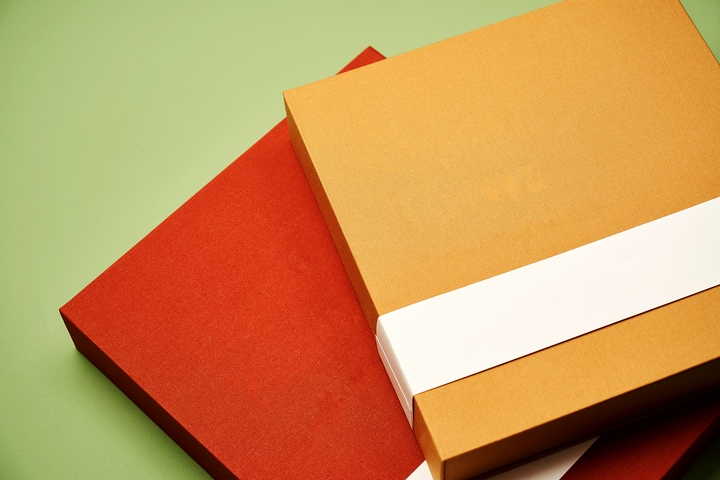Colors play an essential role in how consumers respond to your product. The packaging of your product can attract or repel buyers since it’s their first introduction to what you’re selling. Food packaging colors trigger different emotions for consumers.
Design your packaging based on the type of food you’re selling. For instance, an instant noodle pack stands out from an organic food label because they’re not the same. These days, we eat through our eyes before consuming the actual food we buy. Therefore, the food packaging should reflect the flavor profiles and evoke specific emotions.
From red to brown, here’s a look at the best packaging colors:
Color #1: Red Packaging

You’ve probably heard the saying that “red signifies danger”. However, in product design, red is considered one of the best packaging colors. Imagine the brightest food items you’ve seen like strawberries, apples, and tomatoes. You’d describe them as “juicy”, “succulent”, and “ripe”. That’s because the color stimulates the same emotion you feel when hungry.
There’s also a reason strawberry-flavored products are widely popular because they depict fruity sweetness. Red works best as the packaging color for spicy food or sweet products like juices and candy.
Color #2: Yellow Packaging

It’s believed that the eye responds faster to yellow than other colors. Some color theorists also believe it signifies hope and optimism. Yellow fruits like bananas, mangoes, and pineapples represent sunshine and tropical aesthetics.
Yellow food packaging sends the message of optimism, joy, and ‘fun’, depending on the product. Some food brands with yellow wrapping include Lays and Toblerone. Brands like McDonald’s also use a mix of yellow and red on their branding to stimulate appetite and optimize positive messaging.
Color #3: Orange Packaging

Although orange comes from a mix of red and yellow, it doesn’t have the same intensity as both colors. However, it works as an appetizing color for food products. Consumers associate orange with creativity, honesty, and warmth. So you’ll find the color in snacks, beverages, and foods like Uncle Ben’s Rice. Brands also use orange packaging to promote citrus-flavored beverages like Fanta, Sunkist, and Tang.
Sometimes, brands use this shade to wrap children’s products since they respond better to the color than adults. For instance, snacks like Cheez-Its, Reese’s Buttercup, and cheese puffs all have similar wrapping colors.
Color #4: Green Packaging

Most people associate green with healthy food, nature, or safety. However, with packaging, consumers find certain tones of green repulsive. With this shade, consider the type of product you’re selling and if it’s wholesome.
Many food companies adopt green in their logos after launching an organic product to promote good health. For instance, Knorr changed their logo and packaging to a stronger green shade to endorse their brand as one that supports healthy living.
Beyond vegetable and organic food brands, items containing matcha seem to be the primary food products with green packaging.
Color #5: Blue Packaging

Many consumers hardly eat blue food items since they’re mostly artificial. Packaging in this color can be tricky since blue foods are rare and exotic. Children’s snacks, fruits, and beverages are better off with brighter hues like red, yellow, and orange.
Different shades represent different emotions. A deeper blue can evoke wealth and luxury, while a lighter shade depicts softness. Despite this rarity, blue packaging has worked for food brands like Oreos, Chips Ahoy, and many others. However, many of these companies used a mix of blue and other colors like red, white, and yellow for balance.
Color #6: White Packaging

White signifies purity and simplicity. Your favorite white foods, like bread and rice, are simple and versatile. For food packaging, most companies add a few colors to the text to elevate the design. Choosing this color means you’re looking to promote a clean product in the most minimal way possible. You also want users to know the food uses simple ingredients.
You’ll find white food packaging in foods like ice cream, cheese, yogurt, and milk. However, many of them use white as the base with a mix of pastel shades of blue or yellow. Some organic brands also use muted tones to wrap popcorn and other low-carb products.
Color #7: Purple Packaging

People associate purple with wealth and depth. However, it’s a tricky color for food packaging. Purple wrapping isn’t as common as warmer tones like yellow and orange in food products. Using this color should depend solely on the consumers.
There’s a reason more adults eat Cadbury chocolates and sweets with purple packaging than children. As mentioned above, candies with brighter packaging have a younger consumer base. This is because purple has a more luxurious aesthetic. Consider using this color if you’re looking to sell a high-end food product.
Color #8: Brown Packaging

Brown represents wholesomel, earthy, and homely aesthetics. You think of brown and a warm bowl of soup comes to mind. This is where brown and green differ. You can’t imagine eating a bowl of green soup, so most brands use green packaging for vegetables since that’s more natural.
However, you’ll find brown packaging on products like nuts and seeds. These days, food delivery companies also use brown recyclable wrappers to show their dedication to caring for the environment.

